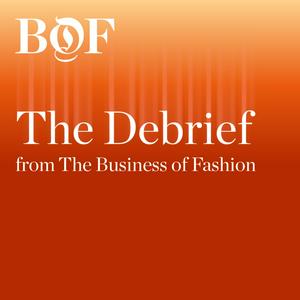Can Gen-Z Beauty Brands Grow Up?
Brands like Bubble, Starface and Byoma rode TikTok-native aesthetics to win Gen-Z hearts and Sephora shelf space with plush mascots, playful stickers and sensorial jelly textures. Founders close in age to their audience moved fast, crowd-sourced ideas and mastered algorithms. Now the oldest Gen Z consumers are nearing 30 and looking for fewer gimmicks and more proof that formulas work.In this episode, senior beauty correspondent Daniela Morosini unpacks what still resonates, where the “dopamine” look carries a credibility tax, and why channel strategy, product performance and smart casting matter more than ever.Key Insights: Gen Z brands broke through by moving at internet speed and co-creating with their audience. “These brands are all just so digitally native… and for a lot of them the founders were quite young themselves,” says Morosini. They were “small, scrappy businesses [with] shorter product launch cycles [and] really savvy marketing.” Crucially, they “did a lot of crowdsourcing, social listening, and were really plugged into internet forums,” so products felt made with, not just for, their audience.The ‘fun’ factor worked best online as visuals drove discovery: “Goopy, gloopy, sticky things… look good in a video. You see someone put that on their face and then you want to try it.” At the same time, expectations have climbed as “people are really quick to reject a product if it doesn’t perform exactly the way they want.” And bright, playful packaging can backfire for results-seekers: “Colourful, bright things we associate with play, silliness, youth and frivolity… you might think, ‘this is not a serious product.’”If stalwarts like Neutrogena and Clearasil have long dominated the teen aisle, why can’t today’s Gen-Z-first labels simply stay youth brands rather than trying to age up? As Morosini puts it, legacy names “have definitely ceded market share to some of these newer indies… these are brands you can find in every drugstore… [they’re] most teens’ or tweens’ introduction to the beauty category.” But “those brands are not cool,” and the Gen-Z pioneers “really want to be cool… and relevant,” not just “the thing that your mum might pick up… when you’re complaining about having a spot.” The challenge is clear: “it’s hard to be both legacy and cool.”Some labels are widening reach by changing where and what they sell. “Byoma went into some more premium retail pretty quickly,” Morosini notes, adding that “retailers really function as a marketing engine.” Others are broadening beyond a single hero. Ultimately, Morisini says survival hinges on utility. “It will come down to the brands that truly have replenishable products differentiated enough, at the right price point, and genuinely offer unique enough results that people will continue to return to them once any maybe the noise around the texture or the packaging has died down.”Additional Resources:Bubble Was Built on Gen Z. Now, It Must Grow Up. | BoF The Gen-Z Whisperer: How Julie Schott Made Acne a Laughing Matter | BoFHow to Keep the Gen-Z Fragrance Boom Going | BoF Hosted on Acast. See acast.com/privacy for more information.


